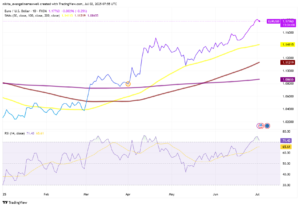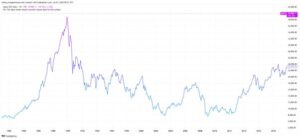President Donald Trump has announced plans to impose a 25% tariff on all steel and aluminum imports into the United States, further intensifying his administration’s trade policy. The new tariffs, which will be implemented in addition to existing duties, mark a significant escalation in U.S. trade relations with major trading partners.
Trump made the announcement while speaking to reporters aboard Air Force One on his way to the Super Bowl in New Orleans. He stated that the tariffs are part of a broader strategy to protect American industries and ensure "fair treatment" from trading partners. Alongside the steel and aluminum tariffs, Trump also revealed plans to introduce reciprocal tariffs, meaning the U.S. will match any import duties imposed by other countries on American goods. He emphasized that if foreign nations impose tariffs on U.S. products, the U.S. will respond with equivalent measures.
The decision marks a continuation of Trump's trade policies from his first term. In 2018, he imposed a 25% tariff on steel and a 10% tariff on aluminum, but later allowed certain trading partners—such as Canada, Mexico, and Brazil—to export these metals to the U.S. under duty-free quotas. Former President Joe Biden expanded these exemptions to include the United Kingdom, Japan, and the European Union. However, in recent years, U.S. steel mill capacity utilization has declined, prompting Trump to renew his push for stronger trade protections.
Data from the American Iron and Steel Institute and the U.S. government show that Canada, Brazil, and Mexico are the top three suppliers of steel to the U.S., followed by South Korea and Vietnam. Canada is by far the largest supplier of aluminum, accounting for 79% of total U.S. imports in the first 11 months of 2024. Mexico also plays a crucial role, particularly in supplying aluminum scrap and alloys.
Trump has long criticized what he sees as unfair trade practices by other nations, particularly the European Union. He has frequently pointed out that the EU imposes a 10% tariff on U.S. car imports, while the U.S. only levies a 2.5% tariff on European vehicles. He argues that Europe benefits from selling millions of cars to the U.S. each year while restricting American auto exports. However, the U.S. itself maintains a 25% tariff on imported pickup trucks, a key segment of the American automotive market that is highly profitable for companies like General Motors, Ford, and Stellantis.
Currently, the U.S. has a trade-weighted average tariff rate of about 2.2%, which is lower than many other countries. According to the World Trade Organization, India has an average tariff rate of 12%, Brazil 6.7%, Vietnam 5.1%, and the European Union 2.7%. Trump's new trade measures are expected to add further complexity to global trade dynamics and could provoke retaliation from affected countries.
A formal announcement detailing the new tariffs and reciprocal trade measures is expected in the coming days, with potential consequences for global supply chains, metal prices, and diplomatic relations between the U.S. and its trading partners.





